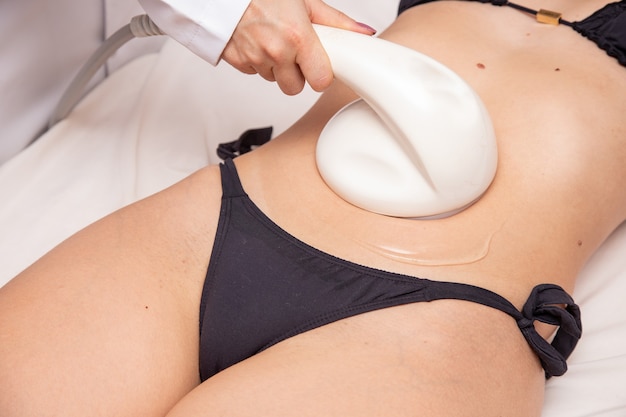Laser liposuction has emerged as a popular body contouring technique, attracting individuals looking for a less invasive alternative to traditional liposuction. Utilizing advanced laser technology, this procedure helps target and eliminate stubborn fat deposits, offering a more sculpted physique. Understanding the Laser liposuction in Dubai process can provide valuable insights for those considering this innovative treatment.
Understanding Laser Liposuction
Laser liposuction is a minimally invasive procedure that employs laser energy to liquefy fat cells, making them easier to remove from the body. Unlike traditional liposuction, which typically involves larger incisions and manual fat removal, laser liposuction uses a thin, cannula-like tube equipped with a laser fiber. This technique not only reduces recovery time but also minimizes trauma to the surrounding tissues, resulting in less bruising and swelling.
The Pre-Procedure Consultation
The journey of laser liposuction begins with an initial consultation with a qualified medical professional. During this meeting, the surgeon evaluates the patient’s overall health, discusses goals, and examines the areas of concern. This consultation is crucial for determining whether the patient is a suitable candidate for the procedure.
The surgeon will typically review the patient’s medical history, discuss any medications being taken, and assess skin elasticity and overall body composition. Understanding these factors helps ensure the procedure aligns with the patient’s expectations and physical condition.
Preparing for the Procedure
Once the patient has been deemed an appropriate candidate, several preparatory steps will be recommended before the laser liposuction procedure. These may include:
- Avoiding Certain Medications: Patients may be advised to discontinue the use of blood thinners, anti-inflammatory drugs, and herbal supplements that can increase bleeding.
- Adjusting Lifestyle Habits: Maintaining a healthy diet and engaging in regular exercise can help optimize results. Patients are encouraged to avoid alcohol and tobacco products, which can impede the healing process.
- Understanding the Procedure: Surgeons will provide detailed information about what to expect during the procedure, including anesthesia options and the specific techniques employed.
The Laser Liposuction Procedure
The actual laser liposuction procedure typically lasts between one to two hours, depending on the areas being treated. Here’s a step-by-step breakdown of what occurs during the process:
Anesthesia Administration
Before the procedure begins, the patient is given anesthesia. Depending on the extent of the treatment and the patient’s preference, this may involve local anesthesia to numb the treatment area or general anesthesia for a more comprehensive approach. The choice of anesthesia will be discussed during the consultation.
Incision Creation
Once the anesthesia takes effect, the surgeon will make small incisions in the targeted area. These incisions are usually about 1 to 2 millimeters in length, ensuring minimal scarring. The incisions are strategically placed in inconspicuous locations to further reduce visibility after healing.
Laser Energy Application
The surgeon then inserts a thin cannula containing a laser fiber through the incisions. As the laser is activated, it emits energy that selectively targets and heats the fat cells, causing them to liquefy. This process also stimulates collagen production, which can help tighten the skin.
Fat Extraction
After the fat cells are liquefied, the surgeon gently suctions the fat out of the body through the cannula. This step is often more straightforward than traditional liposuction, as the laser energy has already broken down the fat. The surgeon may use a combination of suction and manual manipulation to achieve the desired contour.
Closing the Incisions
Once the fat has been successfully removed, the surgeon carefully closes the incisions with sutures or adhesive strips. The small size of the incisions typically results in minimal scarring, and the healing process begins immediately.
Post-Procedure Recovery
After the laser liposuction procedure, patients are monitored for a short period to ensure there are no immediate complications. Recovery times vary depending on the individual and the extent of the treatment, but many patients can return to light activities within a few days. Here are some key points regarding post-procedure care:
- Compression Garments: Patients are often advised to wear compression garments for a specified period to reduce swelling and help the skin conform to its new shape.
- Pain Management: Mild discomfort or soreness is common after the procedure. Surgeons may recommend over-the-counter pain relievers to manage any pain.
- Activity Restrictions: Patients should avoid strenuous activities, heavy lifting, and intense workouts for a few weeks to allow for proper healing.
- Follow-Up Appointments: Follow-up visits are essential for monitoring the healing process and assessing the results. Surgeons will schedule these appointments and provide additional care instructions as needed.
Expected Results
The results of laser liposuction are typically visible within a few weeks as swelling subsides and the body continues to heal. Full results can be appreciated in about three to six months, as the skin tightens and any residual swelling dissipates. Patients often notice a significant improvement in their body contour, leading to enhanced self-confidence.
Conclusion
Laser liposuction offers a modern approach to body sculpting, utilizing advanced technology to provide effective results with minimal downtime. Understanding the process—from the initial consultation to recovery—can help individuals make informed decisions about whether this procedure aligns with their aesthetic goals. As always, consulting with a qualified medical professional is crucial to ensuring a safe and successful treatment experience.


